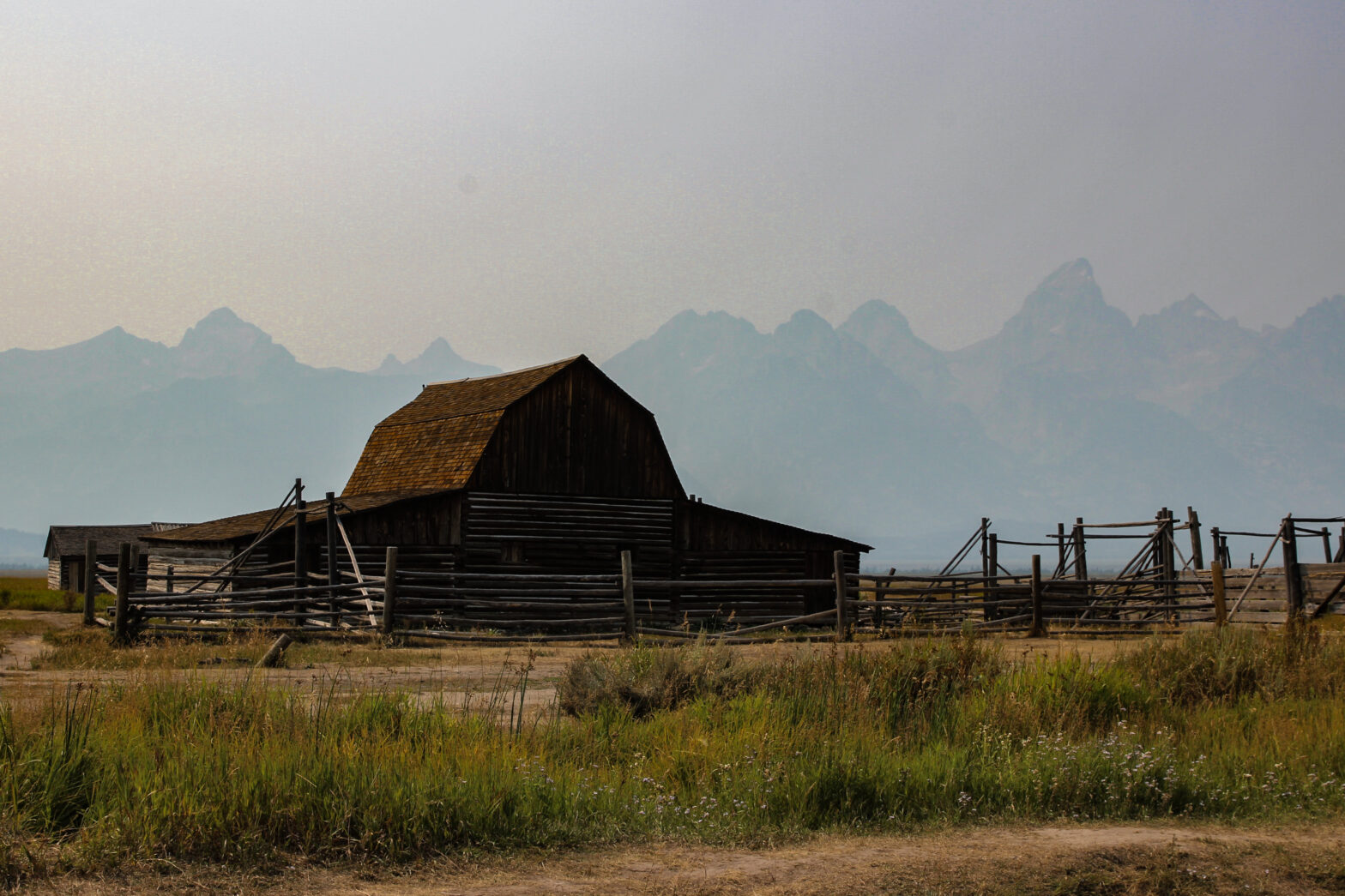If you spend enough time either reading or watching Grand Teton guides, you will eventually see Mormon Row referred to as “one of the most photographed sets of barns in the world”, or something closely related. Settled in the early 1900s by Latter-Day Saints, Mormon Row comprises a small network of homesteads in the Antelope Flats region of Grand Teton, just north of the Blacktail Butte and just a few minutes northeast of the Moose Village. You have seen a picture of some of the most famous structures of Mormon Row – such as the Moulton Barn, shown here:
Yeah, you’ve definitely seen this. Unfortunately, our view was a little different:
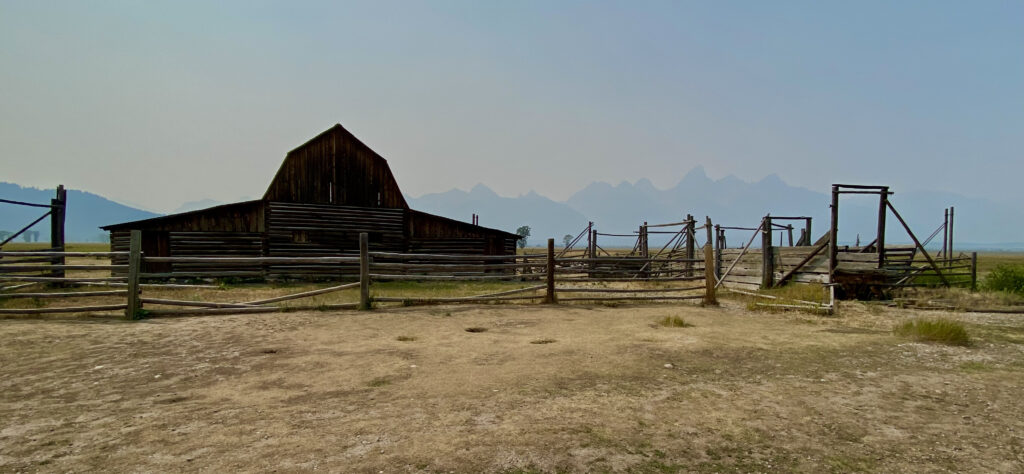
In hindsight, maybe I should have backed up into the field behind me and tried to do a zoom shot of the barn and the mountains. But on the other hand, in the middle of an obviously expansive drought, with that much smoke, it may not have mattered at all.
My photography efforts came in the midst of an afternoon diaspora of the large Meister-Fairchild convoy. My family had left the visitor’s center early and must have seen Mormon Row before I even arrived with Elizabeth, Pam, Terri, and Garrett. Meanwhile, Michael and Irene had taken Tucker back to their AirBNB in Jackson for the duration of the afternoon to get some remote work done. Little did we know it at the time, but this would be basically the last time we would see the two of them on the trip, even though they had another AirBNB lined up in West Yellowstone while we were there. Poor service makes coordinating things like that a bit of a bitch. So that’s how it ended up just being the five of us pulling off in the Mormon Row Historic District as the hazy sun beat down on yet another record hot afternoon in Jackson Hole. Despite that, and despite the obvious desert nature of the terrain, I noted with no small admiration that the settlers of this district had dug irrigation ditches that were flowing with fresh water even in this less-than-optimal season. The ingenuity of the historic settlers is quite impressive.
I backed away from the Moulton Barn, eventually jumping over one of those irrigation ditches to try and frame up the barn as best as I could. Along the way, I met a photographer from Atlanta who was trying to accomplish the same thing as me. Like me, he was frustrated by the smoky vista, which by this point was worse than ever. So bad, in fact, that the Tetons were only kind of visible.
“At least we can kind of see Grand?” Elizabeth said, trying to see the positive side of things. One can always count on her to try her best.
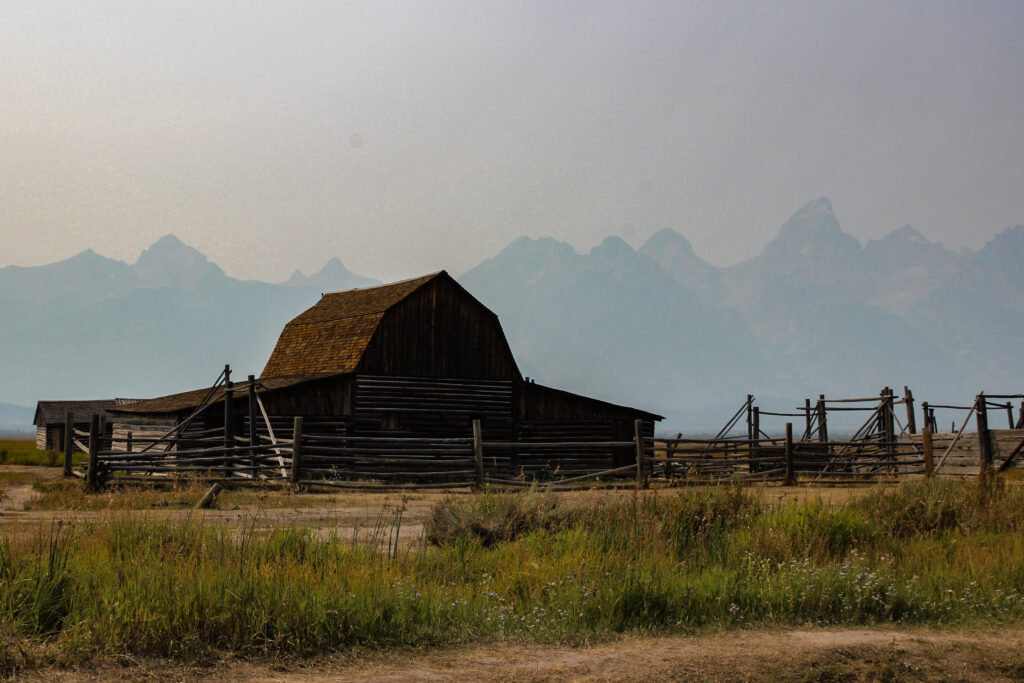
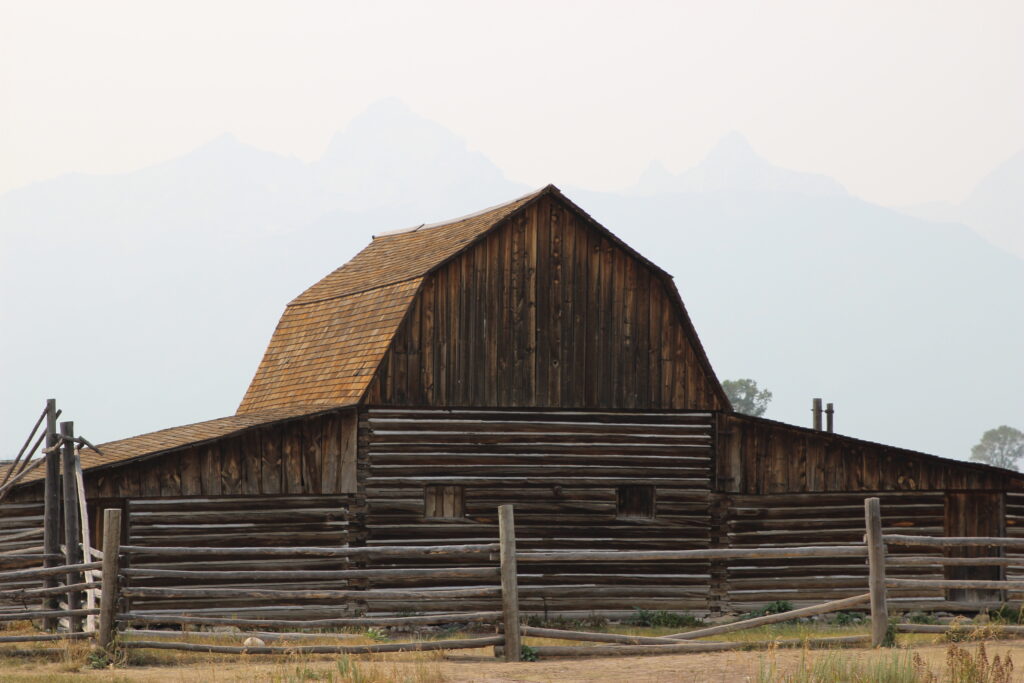
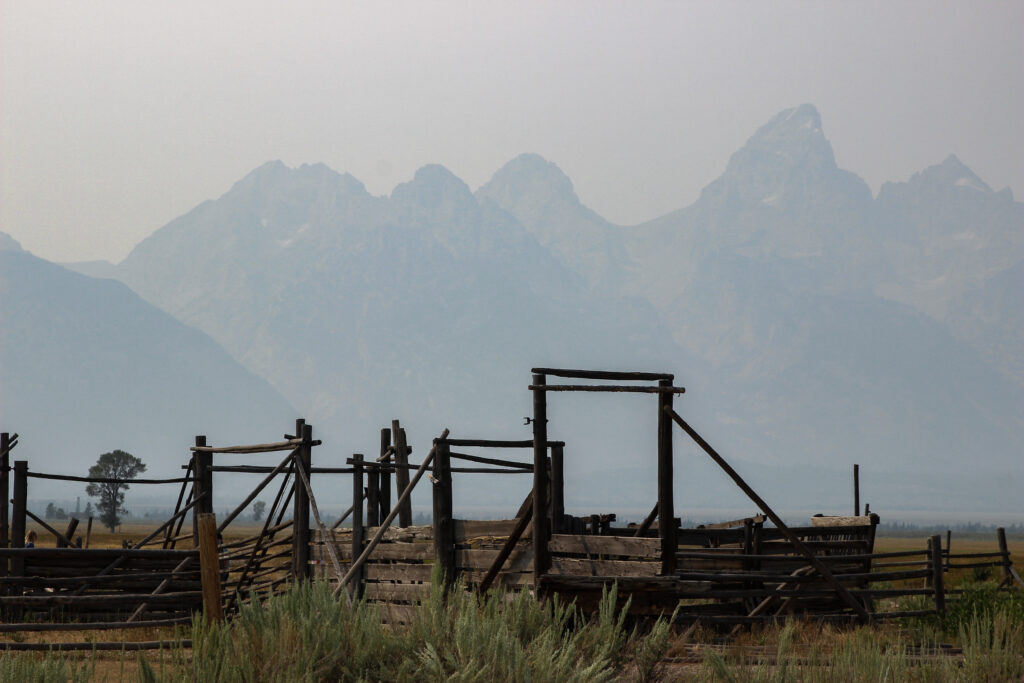
The photographer in me was disappointed at the lack of quality backdrop I had for this opportunity. But I was at least kind of fortunate, because I had another type of photography available to me: a small group of people had gathered around a small prairie dog colony. I got the zoom lens onto the Canon, and kneeled down in the grass, and tried my best to become a wildlife photography genius.
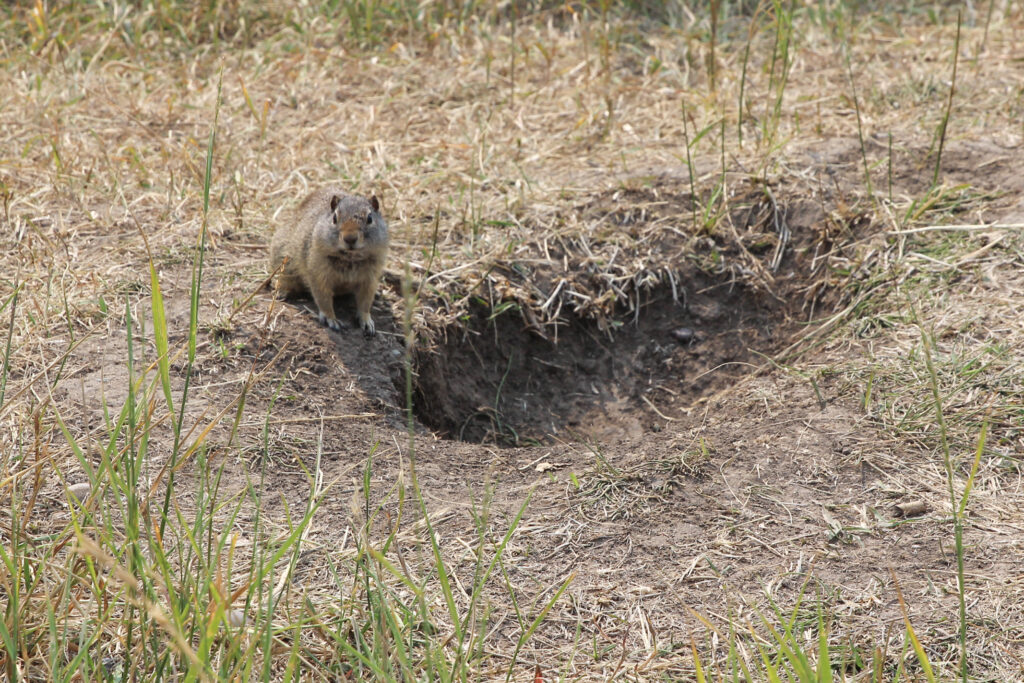
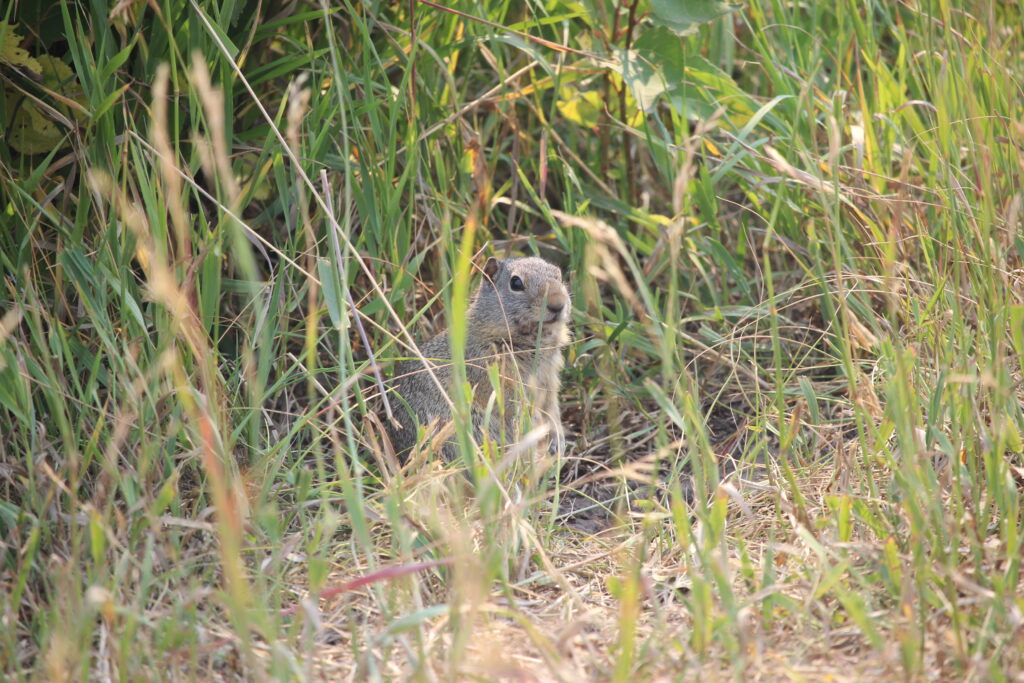
I’m basically a National Geographic-level wildlife photographer.
Also in cool things that happened while I was busy giving the prairie dogs their own little photoshoot: I heard one of the passenger jets coming in for a final descent into Jackson Hole Airport, and got an action shot of it:
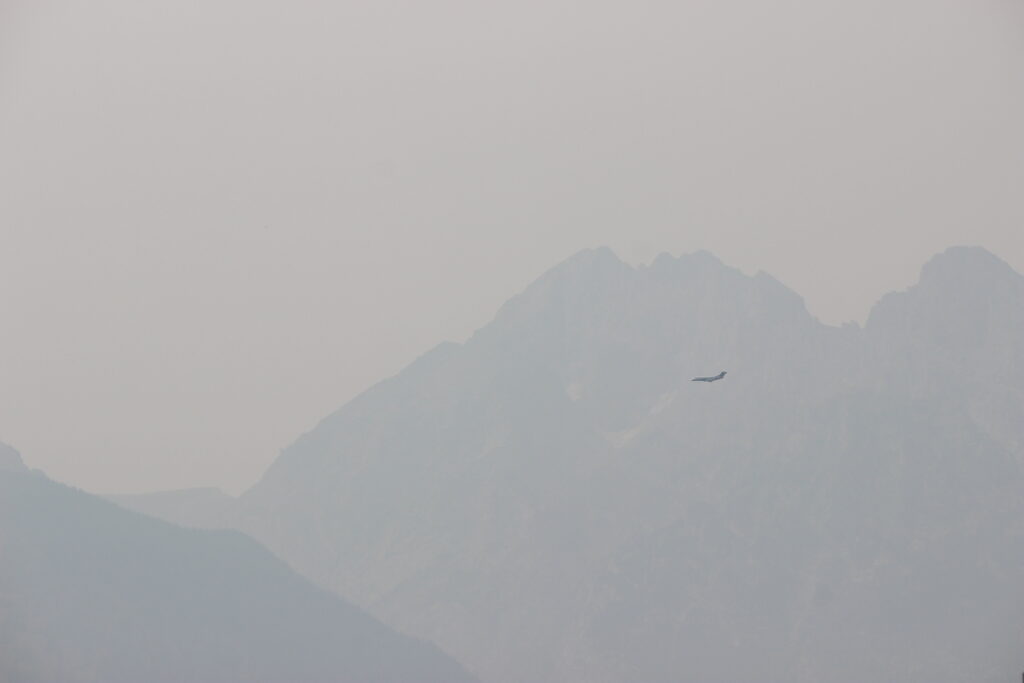
To be honest, Mormon Row wasn’t a place you could stay at for much longer than an hour at the most. Maybe I could have pulled up a chair, set up a timelapse, and let the evening set in, but this was an Elizabeth vacation and we had to stay on the go, a position that I totally understand when you’re somewhere for the first time and may not get back often. It was getting toward 4:00 and our last evening in Grand Teton was coming up; after spending the entirety of the previous day at Delta Lake not with Kris and Alex, and a good chunk of this morning not with Rich and Alex, and being with none of my family at the moment, I wanted to make sure we got back so I could spend a little more quality time with the family members I had dragged halfway across North America to be with. We got back into our two cars and headed north on Highway 89 heading north toward Colter Bay.
I did want to make one more stop along the way, though. The Snake River Overlook is the spot which Ansel Adams took his famous 1942 photo that brought the Tetons to the attention of the world:

Since then, the trees on the bottom left have grown quite a bit, and the river is a little less visible. But I was determined to be a modern-day Ansel Adams, so I stepped up onto the little stone wall separating the overlook area from the steep riverbank. And then I channeled my inner Ansel Adams.
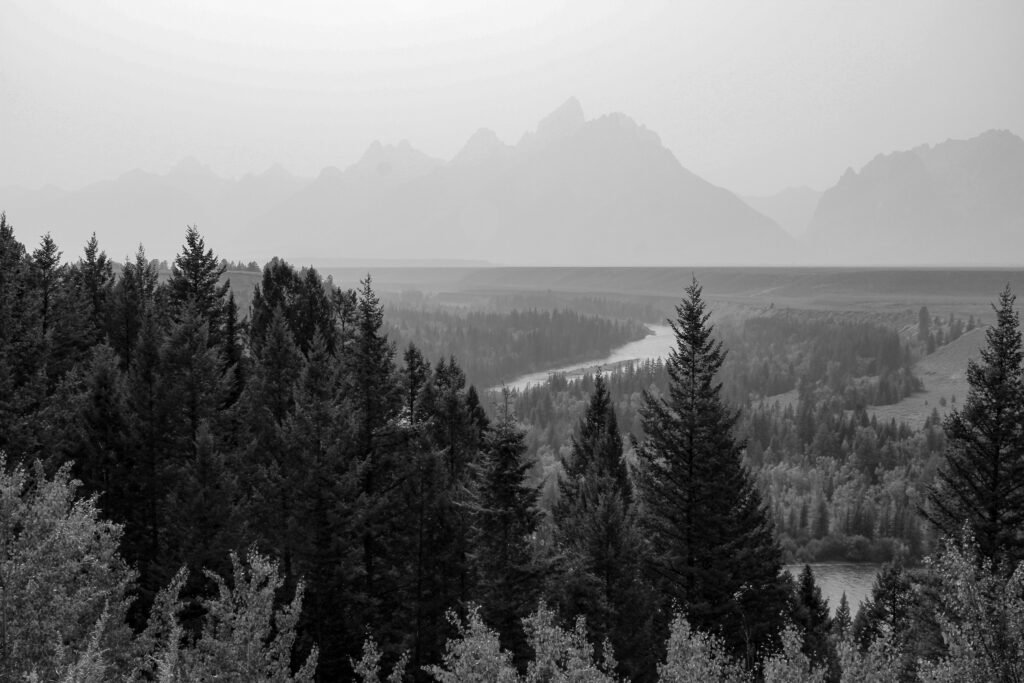
Ansel Adams I am not. It was still pretty, in a bleak sort of way, and at least it provides a justification to go back later!
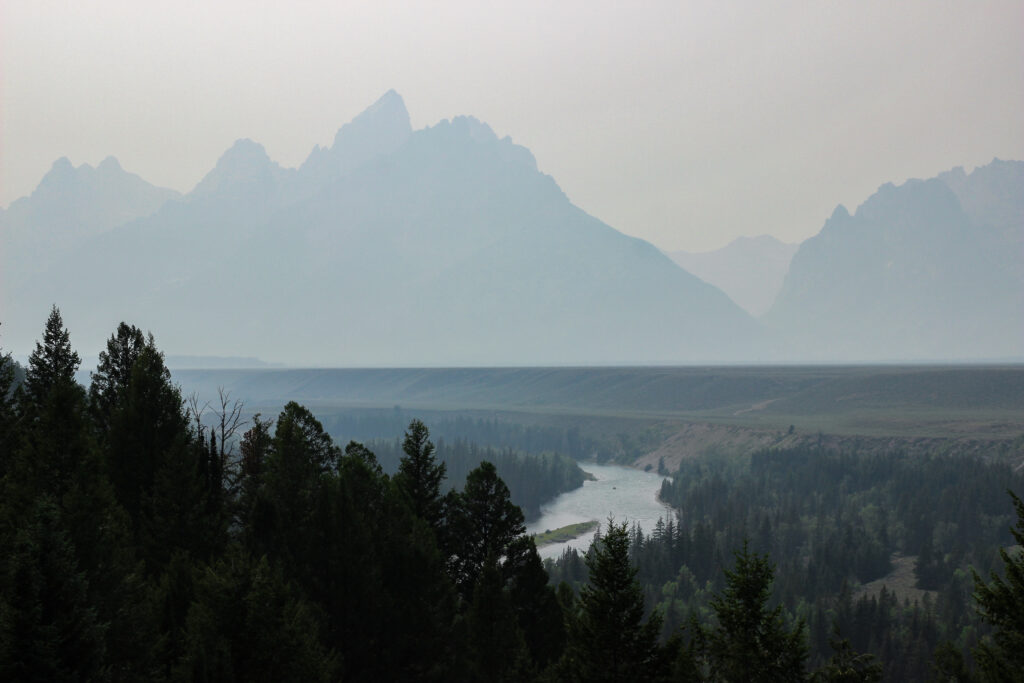
On the way back, we got one final treat. Off to the east, in a field against a stand of trees, a herd of pronghorn does lounged in the afternoon sun.
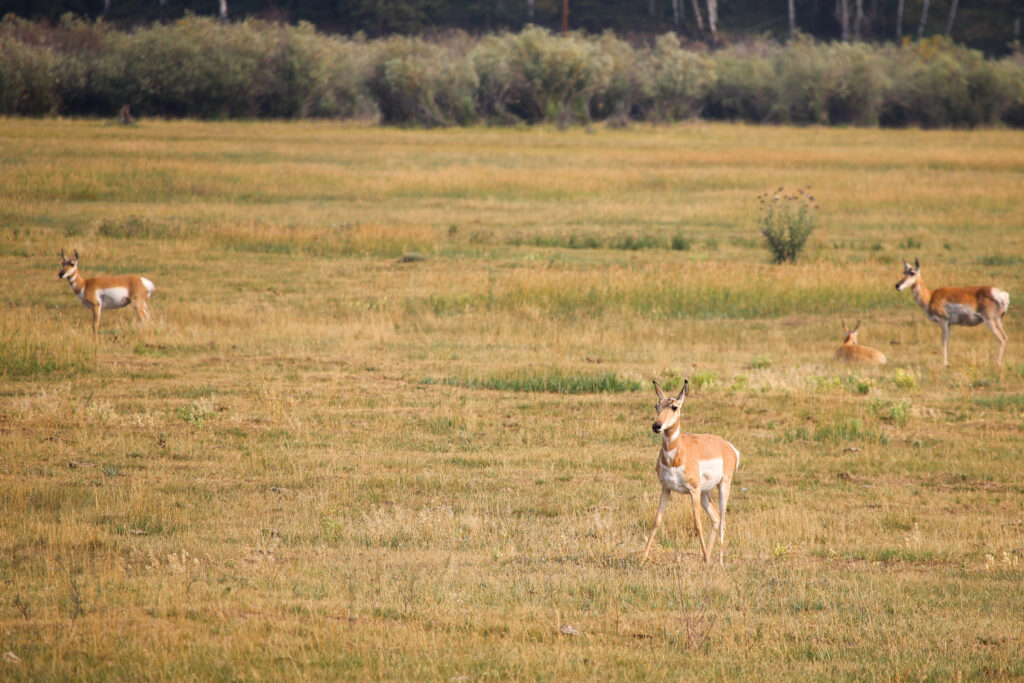
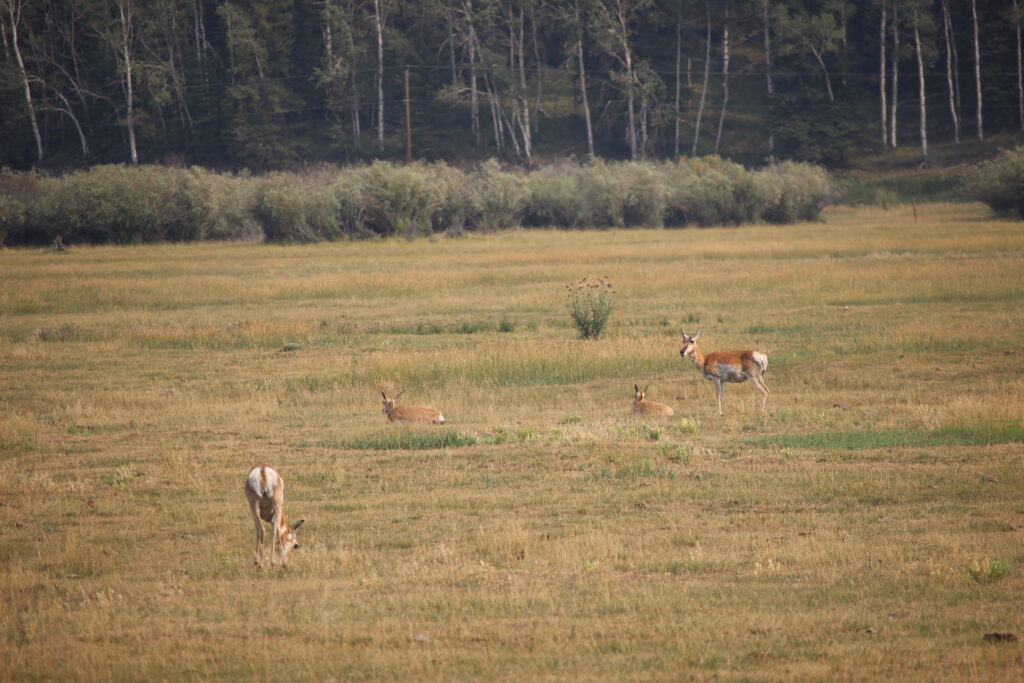
Nolan’s Great Wildlife Hunt had barely even started, and I now had seen bald eagles, pikas, and pronghorn. There would be much more to come.
Nothing else disturbed us on the way back to Colter Bay. Elizabeth eased the car into the general store so we could decide what to have for dinner – yes, we were shopping hungry.
